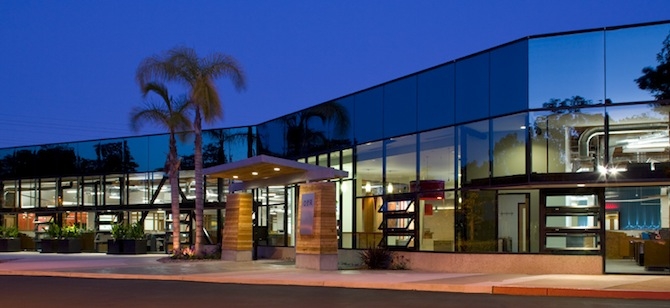Code Green Solutions


Yesterday, the New Buildings Institute (NBI) redefined the landscape of top performers in building energy efficiency in North America. NBI’s new report, “2014 Getting to Zero Status Update,” reveals 213 commercial buildings that are doing the unthinkable: building a legacy of an annual footprint of zero operational energy.
A subset of the 213 buildings tracking ultra-low net energy usage is a group of 32 buildings that the institute has verified to have already achieved zero-net-energy performance. About half of these top-performer buildings (15) are LEED Gold- or Platinum-certified buildings. I’ve had the pleasure of visiting one of these stellar buildings, DPR Construction’s San Diego headquarters, which is also home to a local USGBC chapter, the San Diego Green Building Council.
It shouldn’t be all that surprising that a handful of buildings already angling for top marks in LEED also decided to shoot the moon to reach zero net energy. More importantly, almost 50 percent of buildings that are clearing the zero-net-energy bar have slashed their environmental impacts across a full range of human and environmental health metrics. They are also balancing the energy impacts of transportation and location efficiency, prioritizing investment in local products and materials, and are spurring innovation up and down supply chains of building products, technologies and services.
So, almost half of tomorrow’s energy neutral buildings are also going the distance on complementary sustainability measures. That’s a number to get excited about, and that also needs to grow!
I was fortunate enough to be present for the NBI/National Association of State Energy Officials Getting to Zero Forum last summer that served as a springboard for the fast-growing dialogue around zero-net-energy buildings. USGBC was a proud sponsor of the event and is a continually enthusiastic supporter of this kind of disruptive troublemaking. Bravo!
The report makes other important findings as well. Just as Davis Langdon found in “The Cost of Green Revisited” (“there is no significant difference in average cost for green buildings as compared to non-green buildings”), this new report also finds that “Green, LEED and/or Zero net energy buildings can be achieved within the range of other like-type buildings. When total construction costs for these buildings are analyzed against control groups they are comparable to conventional building costs.”
You can explore all the LEED-certified zero-net-energy projects in a new collection on the Green Building Information Gateway (GBIG). Use the collection to discover the many complementary sustainability strategies these projects have implemented by clicking on the individual projects and exploring the LEED Dashboard.
In addition, four of these 32 top performers that were verified by NBI also earned the coveted Living Building status from our colleagues at the International Living Future Institute (ILFI). Four more have been awarded ILFI’s “Net Zero Building Certification.”
The report also finds that zero net energy is achievable in all regions and climate zones, across many building types and sizes, and in existing buildings, too. GBIG helps you map these buildings as well. Read more about the findings at NBI.org, and start making some trouble today!
[Article originally appeared at usgbc.org]